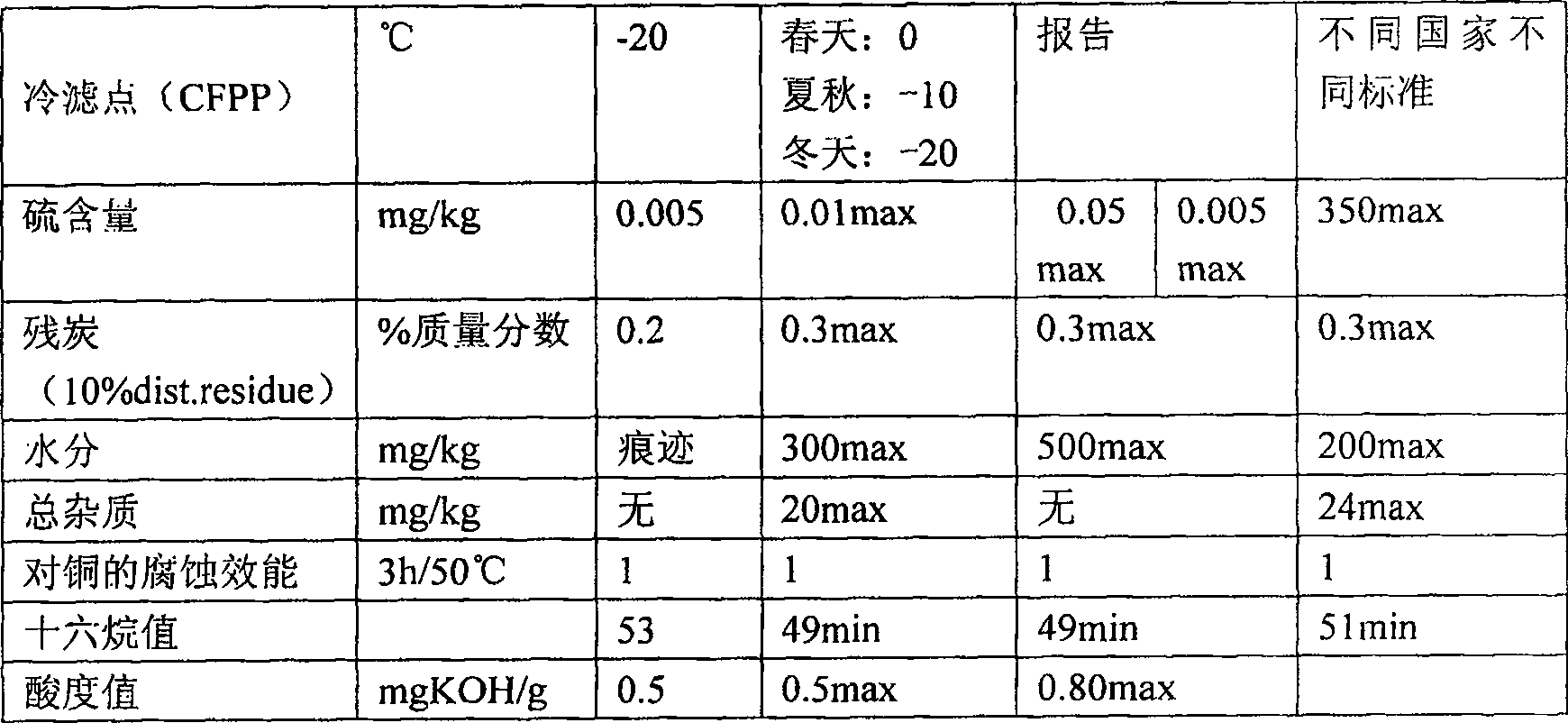Method and catalyst for producing biological diesel oil by high-acid value grease
A high-acid value oil and biodiesel technology, applied in the direction of physical/chemical process catalysts, chemical instruments and methods, organic compounds/hydrides/coordination complex catalysts, etc., can solve the problem of poor purity of by-product glycerin and biodiesel yield Low cost, high catalyst price, etc., to achieve the effect of high yield of reaction product, increase yield, and shorten reaction time
- Summary
- Abstract
- Description
- Claims
- Application Information
AI Technical Summary
Problems solved by technology
Method used
Image
Examples
Embodiment 1
[0013] Add 100g waste grease (acid value 95), 2.5g composite catalyst in reactor, composite catalyst is made of methanol 20g, composite catalyst is made of p-toluenesulfonic acid, tin tetrachloride and concentrated sulfuric acid in a weight ratio of 1:1:1 Mixed, the p-toluenesulfonic acid was dissolved in methanol before mixing. The reaction temperature is 58°C, and the reaction time is 3.5h. After the reaction was finished, the layers were statically separated for 60 minutes. The upper layer was mainly fatty acid methyl ester and a small amount of methanol, and the lower layer was mainly glycerin, composite catalyst and a small amount of methanol. After the upper product was recovered methanol in a methanol distillation tower, it was washed with 15 ml of hot water at 65° C., centrifuged and separated, and the upper oil phase was removed by vacuum distillation to obtain 91.5 grams of fine biodiesel. The total reaction yield was 91.5%.
Embodiment 2
[0015] Add 100g of waste oil (acid value 95), 2.8g of composite catalyst, 28g of methanol into the reaction kettle, the reaction temperature is 60°C, and the reaction time is 3.8h. The composite catalyst is made by mixing p-toluenesulfonic acid, tin tetrachloride and concentrated sulfuric acid in a weight ratio of 1:1:1, and dissolve p-toluenesulfonic acid with methanol before mixing. After the reaction was finished, the layers were statically separated for 60 minutes. The upper layer was mainly fatty acid methyl ester and a small amount of methanol, and the lower layer was mainly glycerin, composite catalyst and a small amount of methanol. The upper product was vacuum recovered methanol through a methanol distillation tower, washed with 15 ml of hot water at 70° C., centrifuged and separated, and the upper oil phase was removed by vacuum distillation to obtain 93.01 grams of fine biodiesel. The total reaction yield was 93.01%.
Embodiment 3
[0017] Add 100g of waste grease (acid value 95) and 3.0g composite catalyst (by mixing p-toluenesulfonic acid, tin tetrachloride and concentrated sulfuric acid in a weight ratio of 1:1:1, and use methanol Dissolve p-toluenesulfonic acid), methanol 33g, reaction temperature 63°C, reaction time 4h. After the reaction was finished, the layers were statically separated for 60 minutes. The upper layer was mainly fatty acid methyl ester and a small amount of methanol, and the lower layer was mainly glycerin, composite catalyst and a small amount of methanol. The upper product was vacuum recovered methanol through a methanol distillation tower, washed with 15 ml of hot water at 75°C, centrifuged and separated, and the upper oil phase was removed by vacuum distillation to obtain 93.25 grams of fine biodiesel. The total reaction yield was 93.25%.
PUM
 Login to View More
Login to View More Abstract
Description
Claims
Application Information
 Login to View More
Login to View More - R&D
- Intellectual Property
- Life Sciences
- Materials
- Tech Scout
- Unparalleled Data Quality
- Higher Quality Content
- 60% Fewer Hallucinations
Browse by: Latest US Patents, China's latest patents, Technical Efficacy Thesaurus, Application Domain, Technology Topic, Popular Technical Reports.
© 2025 PatSnap. All rights reserved.Legal|Privacy policy|Modern Slavery Act Transparency Statement|Sitemap|About US| Contact US: help@patsnap.com


